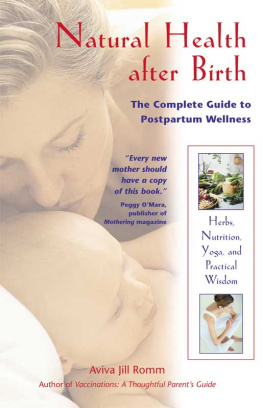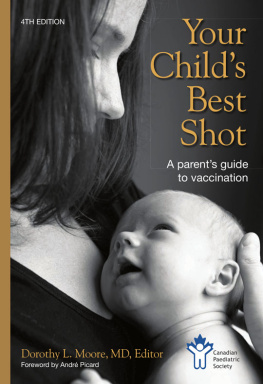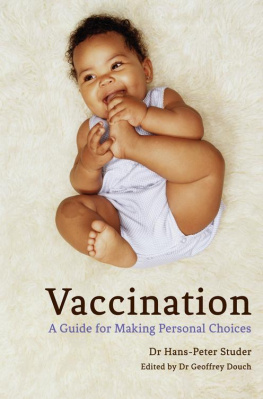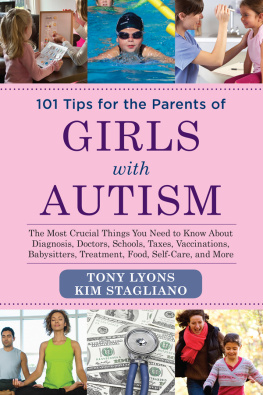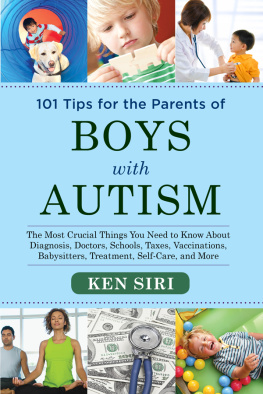
Acknowledgments
This book has required enormous support, in terms of both time and research effort, to provide you, the reader, with accurate, current, and useful information. I owe ongoing gratitude to my husband, Tracy, who has put up with my countless hours at the computer and more hours of me sprawled across the floor with books and articles piled all around (articles for which he spent many hours searching on-line databases and the medical library), and even more, for his open ear when I talked half with him and half aloud with myself over the many interesting and controversial details, facts, and opinions I encountered in my research. Im sure he really didnt want to hear about echinacea, polysaccharides, and macrophages in bed at midnight, but he did listen graciously, even if his eyes were closed.
As a midwife and herbalist, I couldnt ask for a richer group of colleagues and teachers, whom I am also honored to call friends. Over the years this has become quite an array of some of the most colorful, dedicated, humane, humble, caring, intelligent, independent-minded, and pioneering people I have ever met. Each has had time for a question, a piece of information, an insight, a kind word, or a rich discussion. And each makes such a rich contribution to the world that inspires me each day.
A special thanks also goes to my M.D. friends, old and new, and those others of you in pediatrics, family practice, and obstetrics who continue to honor freedom of choice in health careyou know who you are.
Thanks go to Jon Graham of Healing Arts Press for asking me to write this book. Jon, there were times I thought of turning back from this bookaway from the complexity and controversybut your interest in the topic and your support kept me remembering how important this information is and how difficult it is for parents and practitioners to sort through this issue. And to Lee Juvan, for helping me maintain its integrity every step of the way.
I am also thankful to my in-laws, Mendel and Anta Romm, for their emotional support in our move back home to Georgia (can you believe it, me, a New Yorker, calling Georgia home!) during the course of writing this book, and to all our friends whose love and encouragement helped it to happen.
I am eternally grateful to all of those families who have invited me into their lives, homes, births, and health care concerns over the past fifteen years. I know many of you feel you have learned a lot from me. I have also learned so much from you. It is you who can continue to truly make a difference in American health care. Keep your voices strong.
Finally, to my children, whose presence in my life is worth more than words can say. May you be blessed with long lives, much happiness, and great vitality.
Contents
ONE
TWO
THREE
FOUR
FIVE
SIX
SEVEN
EIGHT
NINE
TEN
APPENDIX A
APPENDIX B
Foreword
Vaccinations: A Thoughtful Parents Guide gives readers a look at the many aspects of this controversial subject, which is a growing concern for todays parents. Many parents struggle with finding the answers to their questions about vaccines, wanting to get the whole picture. Aviva Jill Romm presents readers with the risks and benefits of vaccines, vaccine-preventable diseases, and the most recent research about approaches to immunity and disease prevention. All of this information helps parents make informed choices about immunizing their children.
Choice is a key word, and one that is often not presented to parents. The fact that they can choose whether or not to vaccinate their child is sometimes a new concept and presents some obstacles. Understanding health and disease, learning how to prevent illness when possible, and choosing the treatment with as few risks as possible are the keys to optimal health for our children and families. Freedom of choice in health care includes the choice to vaccinate or not. Parents should question the routine use of vaccines, investigate the subject, ask questions, and read the literature. This does not constitute disagreement, but rather promotes educated decisions. Informed parents can make better choices for their children.
Vaccinations: A Thoughtful Parents Guide covers another important issue in health care, which is the prevention of disease. The concept of prevention can also be a new one for some parents. Preventing illness by adopting healthier lifestyle changesincluding diet; immune support with vitamins, minerals, and herbs; minimal exposure to environmental toxins; and physical activitycan optimize good health and reduce the risk of becoming ill. This book offers parents many ways to incorporate prevention as part of their familys lifestyle. A child with a healthy, strong immune system has better resistance and a vital immune response when needed, minimizing the frequency and severity of illnesses.
Addressing such a controversial subject is not an easy task, and it is one I personally would not have wanted to tackle. The challenge of providing a balanced perspective on the topic in the midst of the overwhelming amount of contradictory information in the literature could not have been an easy one.Vaccinations: A Thoughtful Parents Guide does not choose a side. Instead it provides sound information to readers so that they may choose intelligently when making health decisions about their children. Romm refers to the book as a bridge that unites both sides with the common goal of optimal health for all children. This book is such a bridge.
Mary L. Bove, N.D.
Brattleboro Naturopathic Clinic
Brattleboro, Vermont
Introduction
Primum non nocereAbove all, do no harm
Controversial from the Start
Perhaps there is no topic of greater controversy in medicine today than that of childhood vaccinations. That the topic can even be described as controversial is in itself debatable, as many, indeed most, in the medical and public health professions would argue that it is not controversial and that anything less than universal protection of children by the routine use of vaccinations is a travesty of health care. Yet ever since the modern inception of the use of inoculations in humans, there has been dissent. Even as early as the first half of the nineteenth century in England, there was public outrage and horror over the injection of filthy material into humans for the purpose of preventing disease. Indeed, the process of inoculation known as variolation was made a felony in England in 1840. Today, however, it is not the government decrying vaccines, it is concerned parents and medical professionals. And though in the past dissenters from contemporary medical mores may have been easily marginalized, todays parents and professionals are prepared to defend themselves with cogent, well-researched arguments. Add the media to the mix and it becomes apparent that with increasing public awareness there is indeed a controversy in our culture regarding the routine and universal administration of vaccinations for children.
New Concerns about Accepted Methods
While vaccine campaigns have received wide public acceptance for the better part of the twentieth century, we enter the new millennium with growing concern from increasing numbers of parents and medical professionals about the safety of vaccinations when compared with the relative risk of disease in our developed Western nation. In the past fifteen years, this voice of concern, particularly from parents, has actually grown into a formidable political force that has had a significant impact on shaping vaccine policies in the United States. In fact, parents such as Barbara Loe Fisher, founder of the National Vaccine Information Center and herself the mother of a vaccine-injured child, have lobbied successfully for new government policies such as the National Childhood Vaccine Injury Act of 1986. This act is a federal vaccine injury compensation program that also includes vaccine safety provisions such as mandatory reporting and documentation of hospitalizations, injuries, and deaths following vaccination. Many of the parents currently active in vaccine politics are themselves parents of vaccine-injured children, all of whom dutifully vaccinated their children before realizing that vaccine reactions were a serious risk. Unfortunately, it is all too often the case that we become aware of the dangers of a procedure only after we experience adverse consequences.
Next page

